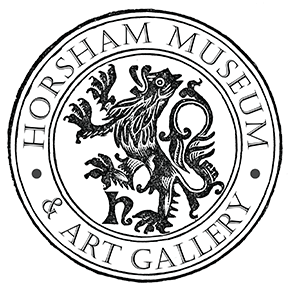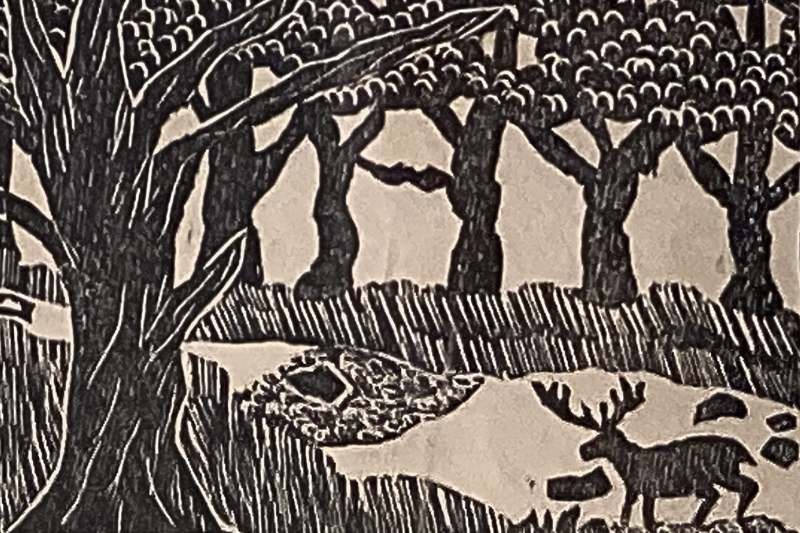
Since reopening the museum in 2021 we have put in place a programme to continuously redisplay our permanent galleries. This creates something new to see, allows objects to 'rest' away from light and other damaging environmental factors as well as creating an opportunity to showcase unseen artefacts from our storage. Many of the objects from my 2023 list are now no longer on display, so the new year is the perfect opportunity to share a new list of some of my favourite items from the galleries.
Hacksilver
This small piece of silver was discovered by a metal detectorist in Shipley in 2022 and is likely to have belonged to the Knights Templar. The church in Shipley was bestowed to the Knights Templar in 1125, but almost 200 years later the Knights Templar would find themselves tyrannised. Following their defeat at the Crusades they retreated to France, however King Phillip IV of France was in debt to the order who refused him further loans. As they fell out of favour rumours began to spread that they were involved in the occult and on Friday 13 1307 an order was given by the French King to arrest the Templars. They were accused of heresy and worshiping pagan deities and many were burnt at the stake. It is possible that this is where the superstition that Friday 13 is unlucky began.
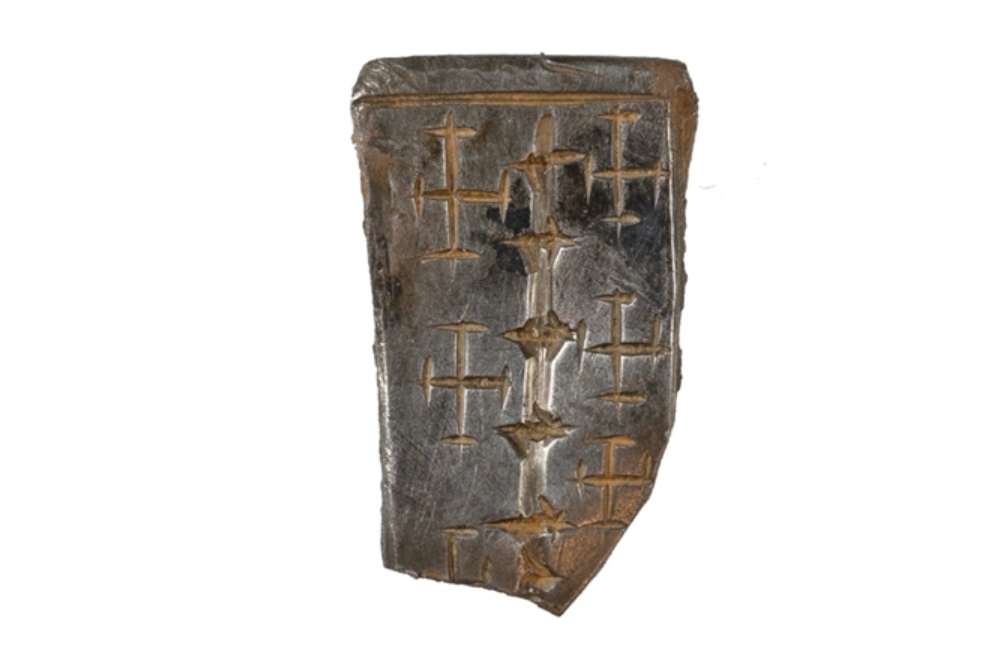
In December 1307 the King of England received the order from the Pope to arrest the Knights Templar. As the church at Shipley was taken from the Templars an inventory was made of their goods following the dismantling of the order. It lists standard household goods, including silver items. This piece of hacksilver is very likely to have belonged to the Knights Templar as it is covered in crudely engraved crosslets. It is curved which suggests that it would have been part of a larger vessel (a cup or a chalice) but that it was 'hacked off' and then used as currency by the weight of the silver.
The hacksilver piece shares a showcase with the Shipley Reliquary which dates from the same time period, but was produced in Limoges France. The reliquary is not listed on the 1308 inventory and is first mentioned in the 1800s. There is some local lore that it did belong to the Knight's Templar and was hidden at the time of the inventory, but it seems unlikely. The plasterwork inside the reliquary does feature a cross, similar to but not quite the same as, a Templar crosslet so it is not impossible that it did belong to the Shipley Templars after all.
I suspect the hacksilver is often missed by visitors to the museum, as it is so small and overshadowed by the flashier reliquary, but is well worth taking the time to find it when you are next at the museum. I was thrilled when it was discovered as although it is a tiny object, not much bigger than a thumbnail, it perfectly encapsulates the story of the Shipley Templars' rise and fall.
Iridescent Bottles
Our 1700s gallery display holds a collection of objects which explain the evolution of bottles in order to hold carbonated drinks. The process of adapting these are (I think) more interesting than you may expect, but my favourite items in that showcase are 2 iridescent bottles. One has a pearlescent sheen and the other a yellow iridescence. Both of these are caused by a reaction with the glass and the soil compounds which they came into contact with when the bottles were discarded and buried in the ground. The yellow one looks particularly decorative, as if this colouring was given to it by design, however it is just a reaction from being buried. The soil accumulated inside this bottle and reacted to the inside of the bottle only, so the effect is distorted further as it is viewed through the outer glass.
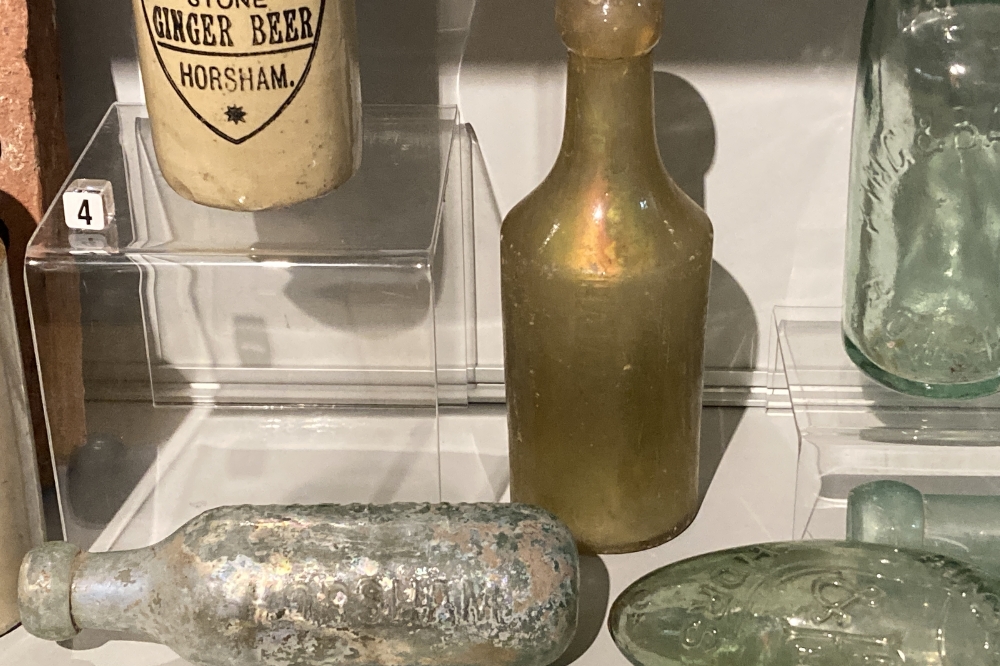
Books from the Vine Press
These books on display in the research library were printed by the Vine Press in the village of Steyning in the District. The press was run by Victor Neuburg, who although not widely known is a fascinating figure from the early 20th century. Victor Neuburg ran the small publishing press from his home Vine Cottage in Steyning. He published books of poetry and folk song including poems that he had written himself, albeit published anonymously. The press opened in 1919 and was hand operated. Each book featured beautiful wood-cut illustrations, created by 3 local brothers including this image of Neuburg himself.
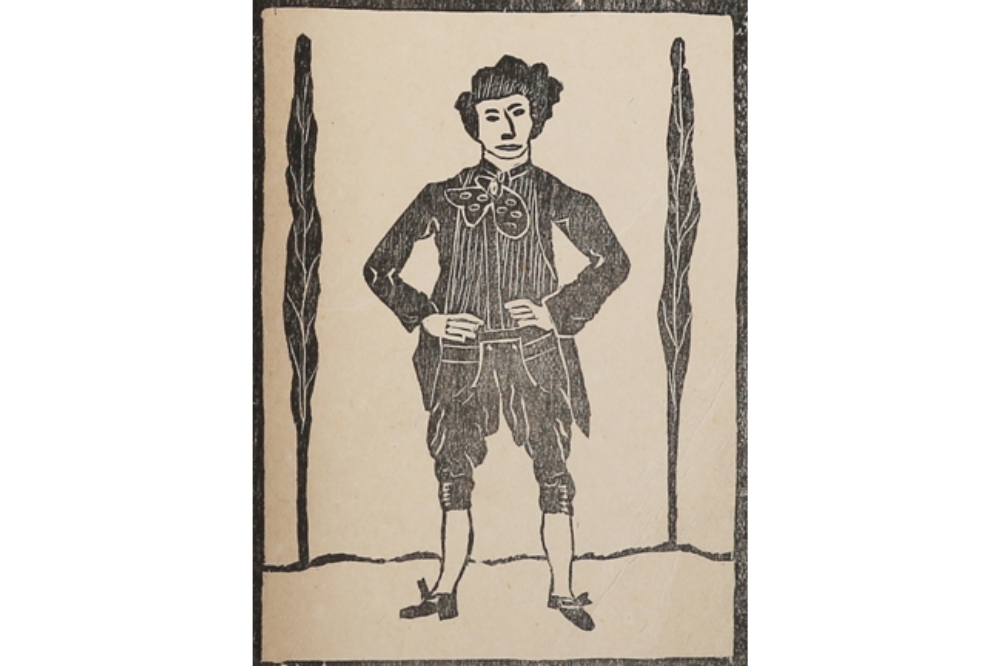
Neuburg believed strongly in collaboration and had an ethos of advocating for other creatives. It was perhaps Neuburg's tendency to prioritise the unique and hand-crafted nature of each publication which meant that the press only lasted 10 years. Books could only be printed in small numbers, and he tended to give them away free of charge. As the press came to an end Neuburg moved to London where he became the editor of the Sunday Referee's Poet's Corner, selecting the works of unknown poets in a weekly competition. It was there that he discovered the poet Dylan Thomas, who at that time was completely unheard of, and helped him to publish his first book of poetry, 18 Poems. Discovering Dylan Thomas, would be an enduring legacy of Neuburg, although perhaps not the one that he is most often remembered for. Thomas did not seem to appreciate Neuburg's contribution to his literary career and spoke cruelly of Neuburg. This was a common pattern of behaviour for Thomas to criticise his patrons, and not reserved only for Neuburg.
Many of the works published by the Vine Press have themes of mysticism and folklore, which are unsurprising considering that Neuburg is most often remembered as an apprentice of the notorious occultist Aleister Crowley. Neuburg was recruited by Crowley when he was a student at Cambridge, and would travel with him to the desert of Algiers where the 2 men performed magical rites to summon angels. Crowley shaved Neuburg's head except for 2 tufts which were died red and styled to look like horns. Victor Neuburg was also part of Crowley's troop which put on several weeks of performances at Caxton House. Crowley hoped to inspired religious ecstasy in the audience, achieving this by serving them a punch laced with the hallucinogenic drug, mescaline. The pair would have an irrevocable disagreement in 1914, and although his name still remains tied to Crowley, this gave Neuburg the opportunity to put his energies towards encouraging and promoting the creativity of undiscovered artists and writers.
Portrait of a Fisherman
This portrait on the main staircase of the museum is by the artist Edith Margaret Harms who was the mistress of Horsham Art School in the early 20th century. We have several paintings by Harms in the collection, although all of the others are watercolours of landscapes or still lives. The painting of a fisherman is the only portrait and only oil painting of hers in our collection. This artworks is one of my favourite objects, purely because I think it is a brilliant painting. Harms captured a sense of the fisherman's character as he looks unapproachable and stern. He is holding a tankard in one hand and a pipe in the other and she painted a lot of details of the sitter's possessions which appear in the painting's background. I do also quite like his sense of style; the neckerchief is rather iconic. There have been countless portraits painted throughout history, but with this painting I really do get a sense of it being a record of a very real person from the past.
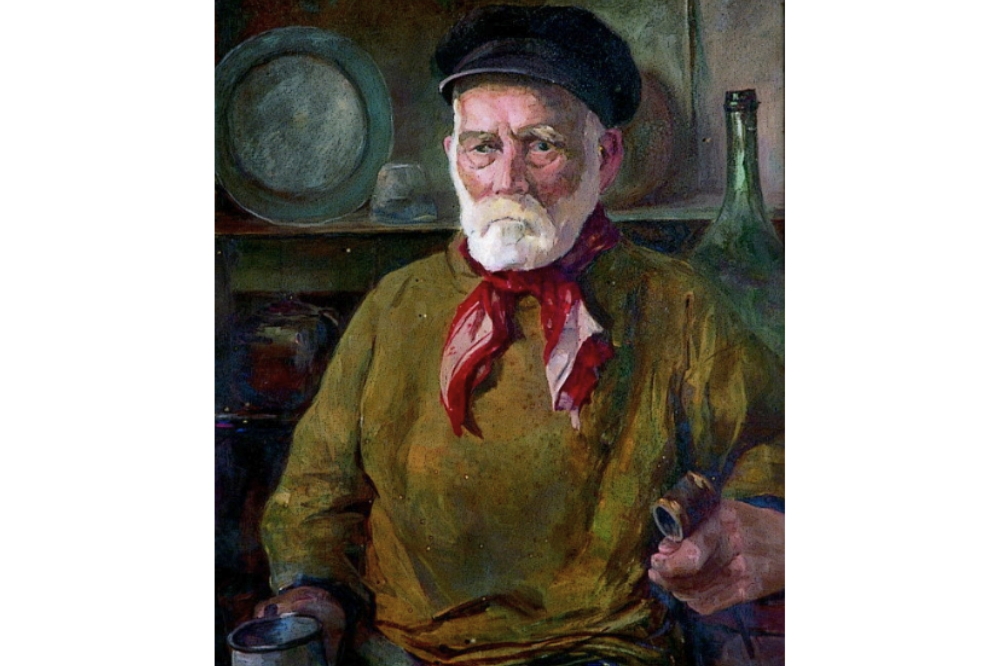
Napoleonic Prisoner of War Marquetry
Following Britain's victory in the Napoleonic Wars, many French prisoners of war were housed in barges moored off the coast of Sussex. The conditions were cramped and unpleasant and their rations meagre. Prisoners were occasionally allowed to leave these make-shift prisons and could sell items at Sussex markets to supplement their rations. The only materials that they had to make these items from were those that were available on the prison ships. As a result straw was a commonly used material as it would have been plentiful since it was used for bedding. Created from carefully selected strands of different hues, each box is decorated on all sides with intricate geometric patterns. On display is also a belt buckle made from bone. This would have likely been made from the bones leftover from the prisoner's food.

Published: 07 Jan 2025
